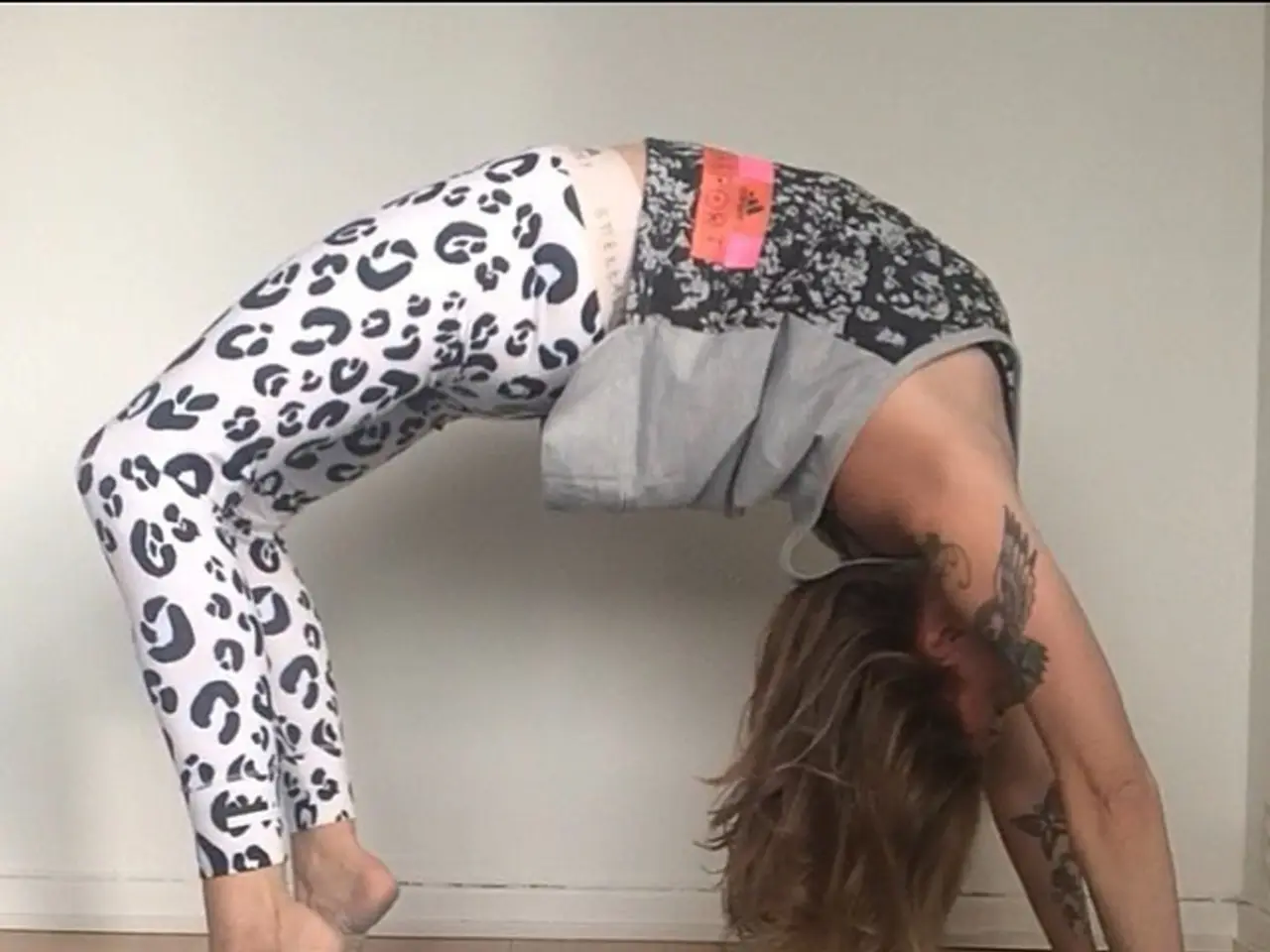Daily yoga routine for a content yogi: Three essential poses for a balanced hip health
A yoga teacher and therapist has shared a simple yet effective hip-opening routine to maintain hip health and alleviate tension. The routine consists of three yoga postures that target different hip muscles and involve crucial movements for improving mobility and reducing tension caused by sitting or inactivity.
The Hip-Opening Routine
Low Lunge (Anjaneyasana)
This posture opens the hip flexors and psoas muscle, counteracting tightness from prolonged sitting. To perform the Low Lunge, start in a tabletop position, step one foot forward with the knee over the ankle, stretch the back leg straight behind, keep the chest lifted, and shoulders relaxed. For added comfort, use a folded blanket under the back knee, and for balance, yoga blocks under your hands. Hold for 5-8 deep breaths before switching sides.
Figure Four Pose (Supine Pigeon Variation)
Gently releasing outer hips and glutes without stressing the knees, the Figure Four Pose can be done by lying on your back, crossing one ankle over the opposite thigh above the knee, and flexing the foot to protect the knee. Optionally, thread your arm behind the leg to deepen the stretch. If reaching hands is challenging, use a strap or belt around the thigh. For added support, place the bottom foot on a block if hips feel tight.
Pigeon Pose (Eka Pada Rajakapotasana)
Stretching the hip rotators and hip flexors, the Pigeon Pose targets the buttocks area and hip flexors in front of the thighs and pelvis. From downward-facing dog, slide one knee forward and the opposite leg back, keeping hips square to the floor for safety. Hold deeply for 10 breaths or longer. To ensure alignment and reduce strain, use props like blankets under the hips.
These poses target different hip muscles and involve hip flexion, extension, and lateral rotation, key movements to improve mobility and reduce tension caused by sitting or inactivity. Using props like blocks, straps, and blankets can adapt the poses depending on flexibility and comfort levels.
Performing the Poses
For best results, hold each pose for several deep breaths, maintain a relaxed breath, and gently ease into the stretch rather than forcing range of motion. The first two moves of the author's hip-opening routine are performed while lying on the back, which can be done on a yoga mat, bed, or sofa. Lie on your back with knees bent, feet flat, and hips slightly wider than hip-width apart, arms by your sides. On exhalation, drop one knee toward the opposite ankle, allowing hips and lower back to rotate gently while keeping upper back and shoulders on the floor.
In the Happy baby pose (Ananda Balasana), lie on your back, bring knees toward your chest, hold big toes or use a yoga strap, breathe deeply, and relax hips and open them if it feels good.
The author performs these poses in the morning to stretch the body after a night in bed and in the evening to release tension and prepare for sleep. Repeat the movement 3 to 5 times on each side, and hold the position for a few deep breaths, feeling the stretch, then inhale and move back to the start.
The Importance of Hip Stretching
Hip health is improved when the psoas major to the adductors muscles are supple, lengthened, and relaxed regularly. The author emphasizes the importance of hip muscle stretching, even for a few minutes each day. These poses can be performed in the morning and evening to stretch the body and release tension.
For more routines, try yoga stretches for beginners or a hip mobility yoga flow. In the Crescent moon low lunge pose, stand with feet shoulder-width apart, take a big step forward, bend knees to 90°, slide the rear foot back, raise arms overhead, lengthen the spine, and relax the torso. Stay in the pose for 30 seconds or as comfortable.
Maintaining hip health through regular stretching and keeping hip muscles active can support the spine and lower back, and release tension there. Sitting at a laptop for extended periods can shorten the hip flexors, leading to weakness, stiffness, discomfort, and limited mobility in later life. Feeling discomfort getting up from a chair or bed may indicate tight hips, suggesting the need for hip stretches. Runners and office workers commonly experience tight hips.
By incorporating these simple yet effective yoga poses into your daily routine, you can alleviate tension, improve mobility, and maintain hip health.
The yoga teacher's routine encompasses three poses from the realm of health-and-wellness, namely Low Lunge, Figure Four Pose, and Pigeon Pose. These fitness-and-exercise movements target various hip muscles, providing crucial flexibility for hip health.
Regularly practicing the Figure Four Pose and Pigeon Pose can help lengthen the psoas major and adductors muscles, essential for maintaining overall hip wellness.
For enhanced impact, the low lunge, a popular yoga pose, counters tightness in the hip flexors and psoas muscle, commonly developed due to prolonged sitting. Incorporating these science-backed poses into a fitness-and-exercise routine may improve mobility and lessen the tension caused by sitting or inactivity.




